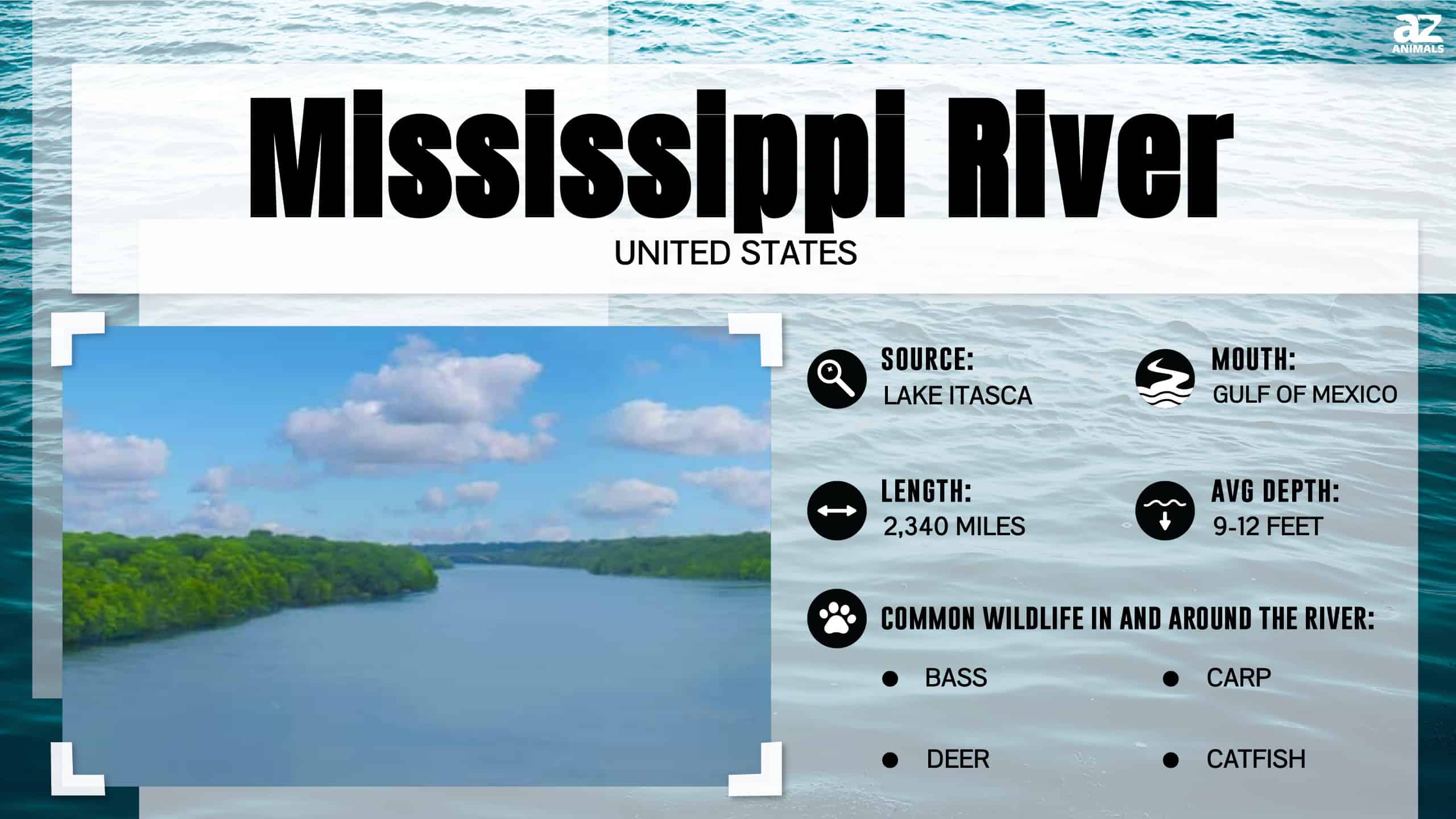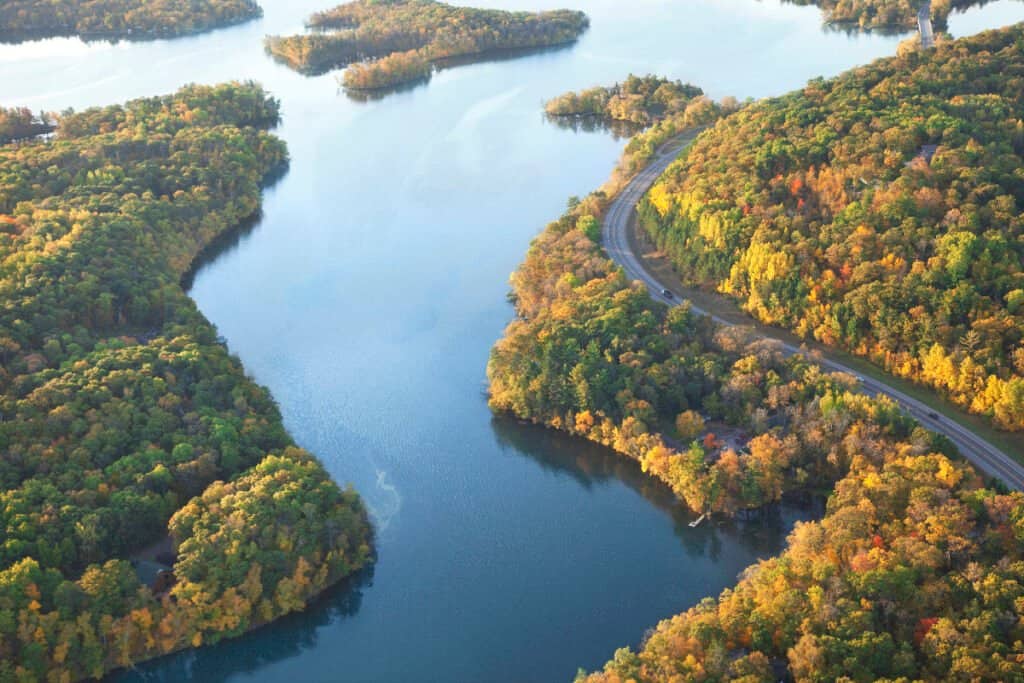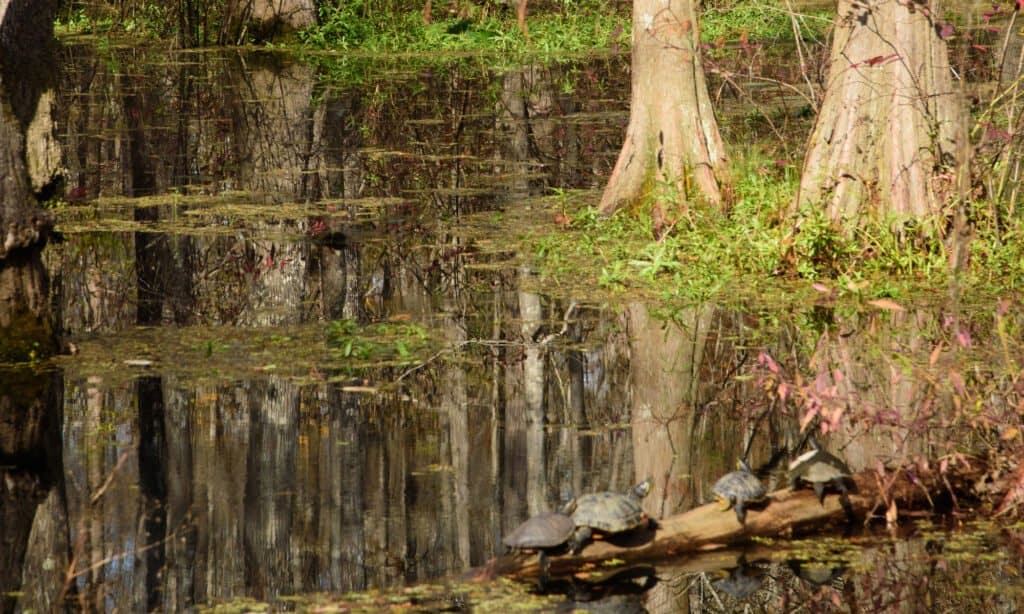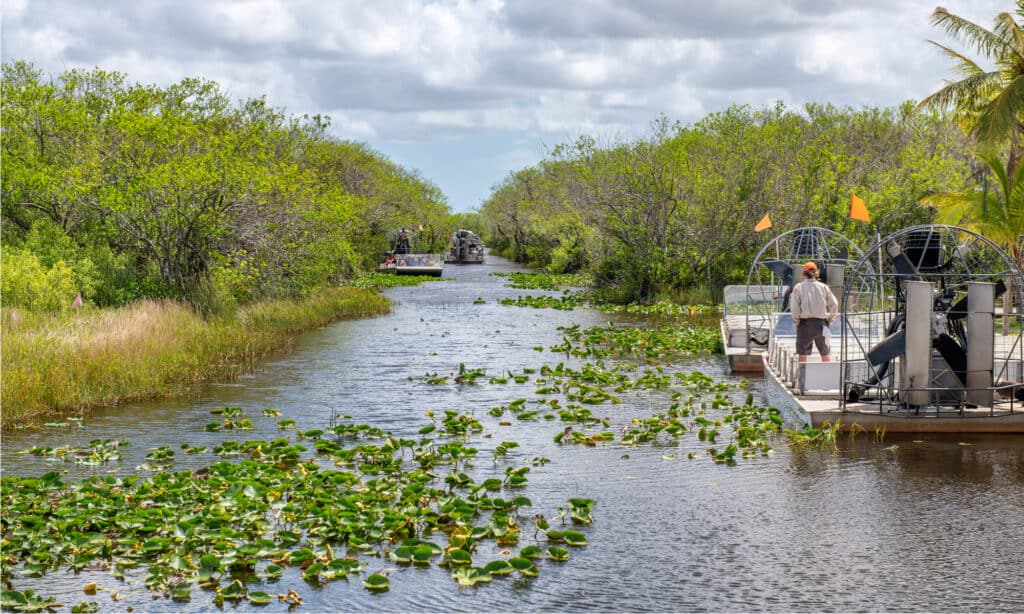After centuries of reworking, construction, and erosion, the Mississippi River — and Louisiana’s coastline — are endangered. As a result, the state of Louisiana proposed a $50 billion plan focused on restoring the Mississippi River and saving the coast in the process by unleashing the river. Keep reading to learn more about this Mississippi River conservation plan.

History of Infrastructure on the Mississippi River
The history of infrastructure on the Mississippi River is actually older than the history of the United States itself.
The construction of the very first levee on the Mississippi River began in 1717 under the order of the French. A levee is a man-made wall constructed around a river to prevent the water from flowing into certain areas. These first additions to the lower Mississippi levee systems were originally created to protect the newly founded New Orleans.
Now, there are 3,787 miles of levees and floodwalls lining the Mississippi River, preventing it from its natural “wiggle.” You see, a river isn’t supposed to stay the same shape. Erosion is supposed to move and place sediment in new areas, and flooding helps shape the river banks. As a result, over time, a once straight river begins to curve and bend.
However, the Mississippi River’s levee system prevents this natural process. This can be dangerous, as it is necessary to maintain the health of the river and the coastline. As a result, this Mississippi River conservation plan is working to rework the current levee system for both the river itself as well as Louisiana.

The Mississippi River has several centuries’ worth of history.
©iStock.com/Willard
Louisiana’s Disappearing Coastline
As mentioned before, the natural process of a river is to take eroded sediment and important topsoils in some areas and move them to new areas. This causes the river to change shapes but preserves the coastline and areas around the river.
Because the Mississippi River is being restrained from this natural process, rather than depositing the sediment along the riverbanks, it’s being swept away into the Gulf of Mexico. As a result, studies have shown that the coastline of Louisiana is disappearing at an alarming rate. Twenty-four square miles per year, to be exact. That’s around the same size as Coron Island in the Philippines.
That’s where this $50 billion plan to save Louisiana’s coastline comes into play.
The $50B Plan to Save the Coast
This $50 billion plan, which came about after Hurricane Katrina and Hurricane Rita, is focused on rebuilding the land and coastline of Louisiana. According to the plan, this would occur through reshaping the Mississippi River. Denise J. Reed, a scientist at the University of New Orleans, has said that this plan will be “one of the great engineering challenges of the 21st century”. However, it is a necessity in preserving the local communities and history of Louisiana.
Restoring the coastline isn’t the only important factor of this plan, however. Creating lasting solutions is the number one priority. As a result, while the new or reconstructed levees will help provide flood protection and also protect the river, it doesn’t stop there. This new plan will also work on pumping important sediment into marshes and barrier islands. This will help to rebuild and restore them. This will help reduce flooding and eroding through more natural solutions.

This 2007 plan will help protect Louisiana and the Mississippi River for years to come.
©Judy M Darby/Shutterstock.com
Mississippi River Conservation Plan Implementation Process
Although this Mississippi River conservation plan would restore the river and preserve much of the currently at-risk coastline, it still has a few hurdles to cross before it’s set in stone.
First, the plan must continue through the state legislature for approval – or rejection. While this plan may seem foolproof at a glance, there are several factors to take into consideration. For instance, although this plan will help preserve local careers and fishing interests, it won’t be an easy – or cheap – task. However, according to Senator Reggie P. Dupre Jr., he hasn’t “heard any opposition yet.”
However, with a bill as hefty as this, it’s also important that it’s elevated to a federal level. As a result, in order to begin implementation, Louisiana’s proposed bill will also need to receive federal approval as well as funding. This may prove to be the most difficult hurdle that this $50 billion plan must pass.
Similar Plans
Prior to Hurricanes Katrina and Rita, two devastating storms impacting the state of Louisiana and surrounding areas in the early 2000s, a similar bill was proposed. This plan, which came about in 2004, was deemed to be too costly by the Office of Management and Budget and had its budget reduced by nearly 93 percent. However, the impact of these hurricanes on both the wilderness and coastline, as well as the state’s people, led to a change in perspective on the importance of coastline preservation.
Louisiana isn’t the only state working hard to preserve its natural wilderness. Other states and areas have created plans similar to this Mississippi River conservation project.
Just in June 2022, the United States House of Representatives passed the Water Resources Development Act of 2022. This is a continuation of several bills passed in the last few decades aimed at helping restore and preserve Florida’s Everglades.

Like Louisiana, the Everglades also require a bill to help restore and further protect it.
©GagliardiPhotography/Shutterstock.com
The photo featured at the top of this post is © RaksyBH/Shutterstock.com
Thank you for reading! Have some feedback for us? Contact the AZ Animals editorial team.






